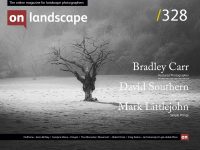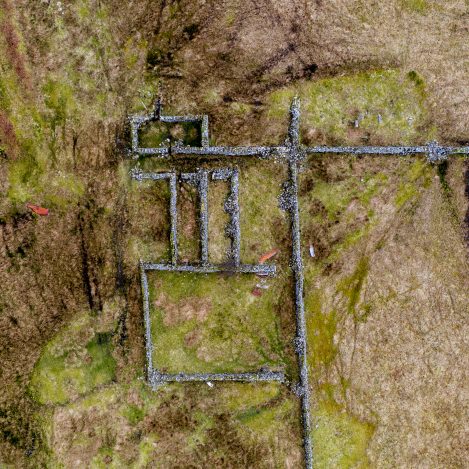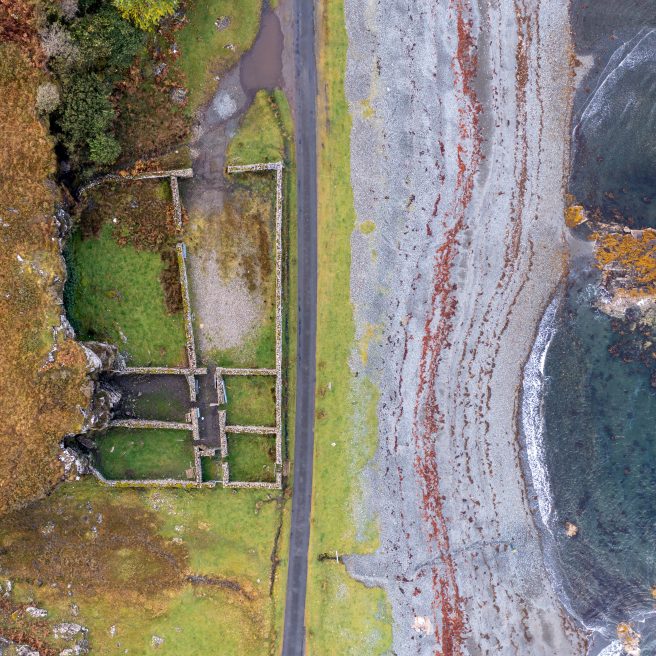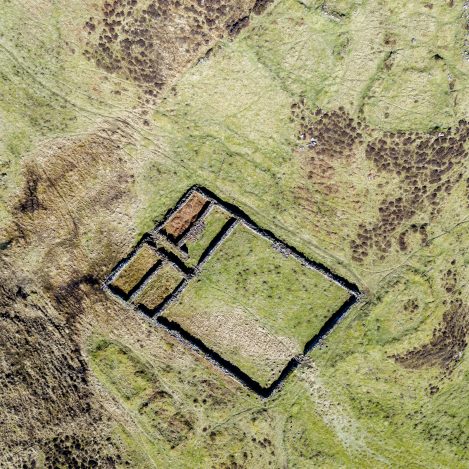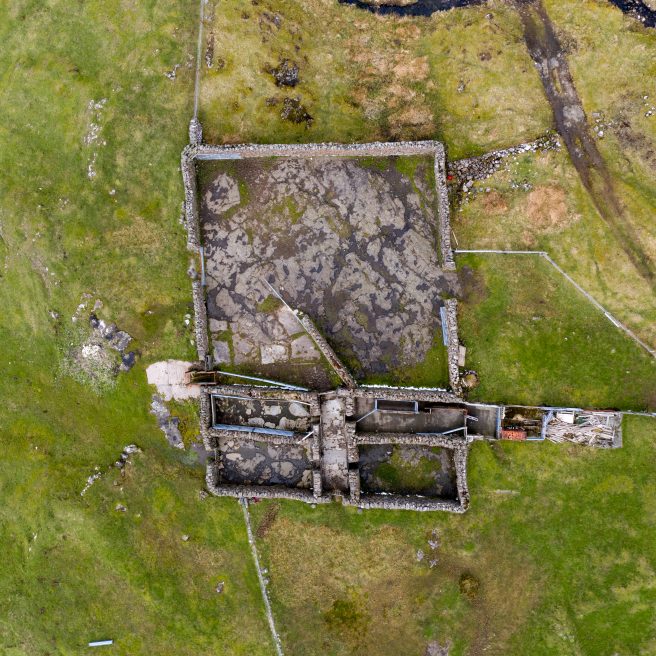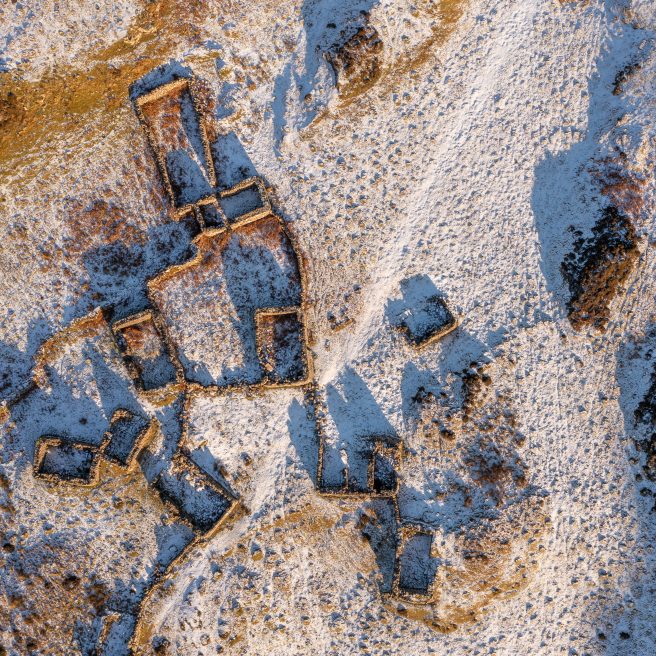A harrowing period of great suffering and adversity

Carolyne Mazur
Carolyne Mazur is a photographer of Scottish Polish parentage. She comes from Angus and her home is now on the Isle of Mull.
A recorder of things, Mazur is interested in the connection we have with the familiar in our wider landscape and the loss we feel when they’ve gone. Her work tends to collect and archive.
She is currently working on Fangan, a project about sheep fanks, exploring their contextual significance and sense of place.
Fank: Fang (Scottish Gaelic): sheepfold; sheep pen; stell; stall; turf stell; bucht; stell enclosure.
Fangan is an ongoing work recording the stone-built fanks of Mull, Iona, and the surrounding islands.
A fank is a structure in which to pen and handle sheep. The size of a fank usually reflects the number of sheep in a hirsel*.
Glen Cannel
It is early March, and having unloaded our quad bike from the trailer, we start following Jamie up the glen. It is bitterly cold, and the clouds threaten snow. The track follows along the side of Loch Bà, (Loch of the Cattle) and then, leaving the loch behind, winds its way along the bottom of the glen to the ruined farmhouse at Gortenbuie, last lived in in 1947. We stop to admire the view and just listen; the shrill call of a Curlew cuts through the silence.
From there, we head across the glen to the other side of the river. This is an ever changing river bed, its route forged over millennia by extreme volumes of water coming down from the surrounding mountains.
This fank has the largest gathering pen of any on the island, and can hold a lot of sheep. There is a cottage (now ruined) along one of the fank walls. Jamie’s family last used the fank in the 1980s. Now they walk the sheep from here down to the farm, five miles away.
Glen Cannel has a dark history like so many island glens. In the 1820’s the landowner instructed his factor to evict every family from their homes. There is no trace left of their houses.
The fank was built on the site of the Glen Cannel burial ground, and gravestones were used in the building of the fank walls.
Descendants of some of these families still live on the island. They hold the story of what happened to their families, an oral history handed down through the generations.
In the 1830’s Mull had a population of around 10,000. By the 1880’s it was less than 4,000. What happened in between was a harrowing period of great suffering and adversity. The islands experienced ten years of potato famine, the collapse of the kelp industry, and the Clearances. During this time, thousands of men, women, and children were removed, often forcibly, from their homes and transported across the world or relocated locally against their will.
The Project
During lockdown, I was asked by the curator at An Tobar, a community art space in Tobermory, if I would show some of my drone photographs to accompany a textiles exhibition. Around the same time, I began photographing my neighbour’s fank; he was retiring, ending a several-generations family connection with the farm. It felt like a significant chapter in island farming was coming to a close.
Having photographed one fank, I began to look for more. I have lived on the island for 30 years, and being married to a farmer, I already knew where a few of them were.
However, I had no idea how many were still in use. I used the OS map to locate fanks all over the island, looking for the words Sheepfold or Sheepwash. Local knowledge was extremely helpful - one family farming a large area in the south of the island pinned twelve fanks on a Google Map for me, I have recorded 6 or so of those so far. Some are sited close to the road, with easy access. Others are several miles or hours walk from the nearest vehicle access.
When I started recording the fanks, I hadn’t made the connection between them and the Clearances. It wasn’t until I flew the drone over an unnamed fank on Lagganulva Farm a few months later that I fully understood this. I could see the shadowy impressions in the ground around the fank, of what had been houses. The stone from their walls had become the fine drystone walls of the fank.
Ensay
For many years, my husband ‘neighboured’ here. A team of family members and neighbours would help to gather the hills and work in the fank; health-checking the animals, dosing, dipping, sorting lambs for sale – different tasks according to the time of year. He remembers long days working within the chest-high stone fank walls in hot sun, cold wind, and rain; hours of hard physical work, but also hours of companionship and beautifully told island stories, drawing pictures of those who had gone before and the way things used to be.
Days punctuated by generous lunches in the farmhouse kitchen, and teas in the fank with chocolate cake. And afterwards drams to mark the work done, and more food, more stories.
Glac Gugairidh is a ruined settlement near where I live, and our neighbour told me how once the people had left the village, the walls of their ruined homes were incorporated to create a fank.
I have now recorded over fifty fanks on Mull, and three on Iona, with more still to do.
Fangan - the exhibition
Fangan has been exhibited in An Tobar (Isle of Mull), Edinburgh, West Kilbride, and Inverness.
I took Fangan to the local Mull agricultural shows in the hope that I would reach more folk than might visit An Tobar. I talked to farmers and crofters whose ancestors were removed from Glen Cannel. I talked to farmers who remember working in fanks, now disused, all over the island.
It has been good to show the work to a variety of audiences and for the photographs to have been received with interest. I realise that whilst the fanks make beautiful images, without explanatory words, the significance of their existence is not informed by the photographs themselves.
These are stories that should not be forgotten, so my next step is to create a book to present the fanks themselves and the stories connected with them.
Fangan is on display in Xoko, Bridge Street, Inverness, until the end of May, closed Mondays.
*Hirsel – the land grazed by a particular flock of sheep.
- Glen Cannel
- Dhiseig
- Unnamed fank at Lagganulva
- Ensay
- Glac Gugairidh
- Pennyghael
- Gualachaolish
- Monk’s cell, Iona
- Derrynaculen
- Burg, Shearing

